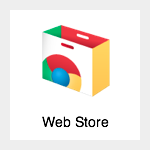 The Chrome Web Store launched today. In a nutshell, it’s a marketplace for installable web apps. Chrome’s New Tab page now has a Web Store link, along with app icons for all the apps you’ve installed. There’s nothing technically interesting going on here - the “apps” are just thin wrappers around links to websites. The Chrome App Store is really only one thing: a way for consumers to pay you for your web app. Which, believe it or not, is a huge deal.
The Chrome Web Store launched today. In a nutshell, it’s a marketplace for installable web apps. Chrome’s New Tab page now has a Web Store link, along with app icons for all the apps you’ve installed. There’s nothing technically interesting going on here - the “apps” are just thin wrappers around links to websites. The Chrome App Store is really only one thing: a way for consumers to pay you for your web app. Which, believe it or not, is a huge deal.
Now, it’s true there are some ways to make money from web apps already. There are actually three ((Arguably, the fourth way to make money on a web app is to wrap it in PhoneGap and stick it on the iOS app store. While tangential, the fact this is a popular route reinforces my argument.)):
-
Sell advertising on your multimillion-user site. Often this requires VC to ramp up to a huge user base.
-
Sell your app as a service to companies that subscribe. This can be quite profitable but consumers aren’t willing to do this.
-
Get paid directly to build custom web apps.
The Chrome App Store is irrelevant for the above categories of software since they’re profitably humming away. However, there are a lot of potential web apps that don’t fit into the above categories. Specifically, consumer-oriented apps that aren’t appropriate for the “scale huge, sell ads” model. Some examples:
-
Games
-
Specialty consumer software (like WeddingDJ)
-
Personal productivity and finance software
-
Magazines and newspapers
-
Most stuff on the iOS App Store
Most web developers in the above markets attempted to do the obvious: charge customers to use their sites. However, having to put in your credit card info or jump through a PayPal hoop to pay for something online is a pain in the ass. It can’t be understated: a credit card entry form is a brick wall to most consumers. The vast majority of them would never consider putting their credit card info in to pay for a web site, no matter how good it is.
Those same people don’t think twice about paying for apps, especially as a one-time fee. Hence, the great success of the iOS App Store. The App Store, and iTunes before it, and Amazon before it, showed that people will pay to buy things online if they can just click. Developers flocked to the iPhone because you can make money there, myself included.
A lot of people would love to make web apps for consumers, but their ideas aren’t viable under the advertising model. It’s insanely hard to bootstrap a consumer-facing web startup because of this. As a consequence, startups that would have been building web apps five years ago are now building iOS apps. The web is a great platform, but if consumers aren’t paying you, then you’re limited in what you can build.
So now we wait and see if consumers embrace the Chrome Web Store. If they do, expect to see a whole new wave of web apps.